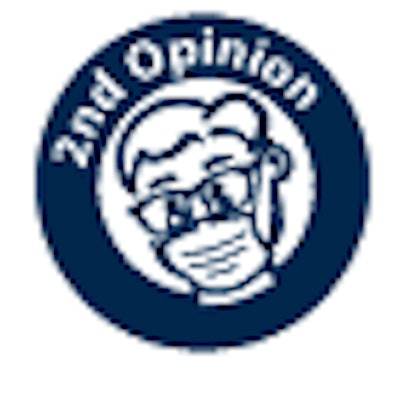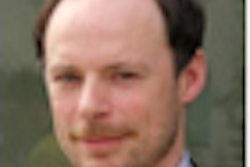
This blog posting originally appeared December 6, 2012, on dentalinformatics.org. Reprinted with permission of Dr. Titus Schleyer.
DrBicuspid.com recently ran a story about the EZCodes system and SNODENT, titled "Diagnostic dental codes: Are we there yet?" Unfortunately, the answer to that question is "no."
The emergence of not one, but two dental diagnostic vocabularies is troubling. First we have essentially none, then suddenly two. This reminds me of a recent quote by Doug Fridsma, MD, PhD, director of the Office of Standards and Interoperability in the Office of the National Coordinator for Health Information Technology, at the American Medical Informatics Association (AMIA) 2012 Annual Symposium: "Standards are like toothbrushes. Everyone has one, but nobody wants to use someone else's."
I appreciate the dental analogy, but duplicate standards are no laughing matter. Dentistry is currently wasting a huge opportunity to create a novel, forward-looking approach to representing dental diagnoses. Unfortunately, we seem to be stuck somewhere between the Stone Age and the 19th century.
To understand why, we need to look back a few years. The ADA started working on the first incarnation of SNODENT (Systematized Nomenclature of Dentistry), its diagnostic vocabulary, sometime in the '90s. The project took a while and SNODENT was supposed to be released in January 2000 (see "SNODENT to provide inclusive means of transmitting dental information," ADA News, May 3, 1999). When the ADA News asked then ADA President Tim Rose, DDS, "Will you be using SNODENT in your office?" he confidently answered, "I sure will."
Fast-forward to 2012: We are still waiting for SNODENT, now going into its second incarnation. (Actually, can you be reincarnated when you have never been born? Sounds like a Zen koan.)
In part, the EZCodes diagnostic vocabulary, a project of Harvard University School of Dental Medicine's Elsbeth Kalenderian, DDS, MPH, emerged as a reaction to this "Waiting for Godot" scenario. Normally, few people would care about competing dental diagnostic vocabularies, were it not for two important factors:
The Health Information Technology for Economic and Clinical Health (HITECH) Act: Sometime in the future, the Department of Health and Human Services will anoint one dental diagnostic vocabulary as "the" standard for interoperability of diagnostic information in dentistry.
The ADA is realizing quite a bit of nondues revenue from licensing the Code on Dental Procedures and Nomenclature (CDT). (According to a recent conversation with an ADA staffer, a CDT license is about $11/year per customer of an electronic practice management system and $1,000/year per institutional site license. So it stands to reason that licensing a diagnostic vocabulary similarly might generate another nice chunk of cash for the ADA every year.
Apples and oranges?
So what about the comparative merits of SNODENT and EZCodes? SNODENT has about 7,000 terms, EZCodes about 1,300. EZCodes was developed by a working group of the Consortium for Oral Health Research and Informatics, mainly by merging several existing dental diagnostic vocabularies. SNODENT was developed through a somewhat opaque process that, to my knowledge, was never really published. Both vocabularies are currently free for researchers after signing a licensing agreement.
How well do these codes work? According to the DrBicuspid.com article, EZCodes are currently being piloted in 17 dental schools and institutions located in the U.S. and Europe. There is also a 2011 paper on the evaluation of the Z Codes, a major component of the EZCodes (Journal of Dental Education, May 1, 2011, Vol. 75:5, pp. 605-615).
Meanwhile, SNODENT is rumored to be evaluated in a few dental schools, but a recent search for "SNODENT" in PubMed turned up only the same three papers that have been there since 2006. The only other reference to a comparison between the two vocabularies (again, from the DrBicuspid.com articles) alleges that "the ADA sees EZCodes as an 'interface terminology' useful for capturing health problems but not as a replacement for SNODENT in storing information in EHRs [electronic health records]."
I fear that neither of these efforts will produce a satisfying result in the long term, unless some radical changes are made. Even worse, the tug-of-war and duplicate work consume precious resources that dentistry, as a profession, can ill afford to waste. Here are a few relevant observations:
The world is, in general, moving away from top-down, bureaucratic approaches to developing and implementing standards. Why? Because they don't work. The healthcare landscape is littered with ailing, moribund, or just plain dead standardization efforts that consumed a lot of time and energy, and are essentially not used in practice. The more promising approaches are smaller, nimbler, and less bureaucratic, and engage the communities who care about and use the product from the very beginning.
Dentistry has a very successful and broadly used coding system, the CDT. The CDT has about 710 codes. Clinicians know most of the ones they use frequently by heart. Clearly, knowing codes by heart gets harder the larger a code set is -- difficult with 1,300 codes and fairly impossible with 7,000. But that is not an unsolvable problem. The entry interface for the codes in the electronic patient record simply must be smart enough to make choosing the right code easy for the user. This is a significant, but solvable, human-computer interaction design challenge.
Speaking of design: One adage in the design community is "fail early, fail often." Bringing something as complex as a new diagnostic vocabulary online rarely works with a big-bang approach. It makes much more sense to focus on smaller pieces of the puzzle, get the bugs out, and then move on to developing the next bigger increment. (One clue for this is hidden in the Z Codes evaluation paper cited above: Over a period of one year, the University of California, San Francisco used only 93 [63%] of 147 Z codes.) Unfortunately, developing a dental diagnostic vocabulary in an incremental, iterative approach would require a level of collaboration, shared vision, and coordination among dentists, informaticians, vocabulary and terminology specialists, and the dental IT industry that is unlikely to materialize.
Coming back to the statement above that "the ADA sees EZCodes as an 'interface terminology' useful for capturing health problems but not as a replacement for SNODENT in storing information in EHRs," we need to clear up a misunderstanding. Separating work on various aspects of a vocabulary makes no sense. As Kent Spackman, MD, PhD, states in an authoritative paper on terminologies, ideally, interface and other terminologies should be derived from a common reference terminology because this "may allow different terminological efforts to focus on separate parts of the problem and to cooperate in solving the overall problem." Given what we are witnessing, wishful thinking indeed!
Unfortunately, both vocabulary development efforts decided to stick with outdated models of representing classifications and terminologies. Over the long term, those approaches will be about as efficient and effective as the horse and buggy are for transportation today.
The formalism for representing "things" for the foreseeable future are "ontologies," which even the Journal of the American Dental Association discovered in a 2010 editorial (October 2010, Vol. 141:10:1173-1175). For a number of reasons, ontologies are way more powerful for representing diagnoses, treatments, and other concepts in healthcare than traditional approaches. (One thing they do very elegantly is to combine the terminology, information, and inferencing models described by Alan Rector, MD, PhD, in "The interface between information, terminology, and inference models" [Studies in Health Technology and Informatics, 2001, Vol. 84:Pt 1, 246-250].)
So at this point, ontologies are the way to go in architecting vocabularies. The good thing is that you can largely reuse the work spent on creating vocabularies when you build ontologies, so not all past effort is wasted.
Developing and maintaining large vocabularies requires a lot of time and money. Very few organizations have the wherewithal to support this process. Here, again, we can take a lesson from the ontology world. Many ontologies are developed in a completely open process by their community of users. While development still must be organized and regulated, costs and effort are spread over a much larger number of individuals, groups, and institutions. This has two benefits: Everyone who needs the ontology uses it, and no one has to ask how much it costs.
So what does the future hold for dental diagnostic vocabularies? Given the current path, most likely mediocrity, tension, conflict, widespread dissatisfaction, and little benefit. Not a pretty picture.
Titus Schleyer, DMD, PhD, is director of the Center for Dental Informatics at the University of Pittsburgh.
The comments and observations expressed herein do not necessarily reflect the opinions of DrBicuspid.com, nor should they be construed as an endorsement or admonishment of any particular idea, vendor, or organization.



















